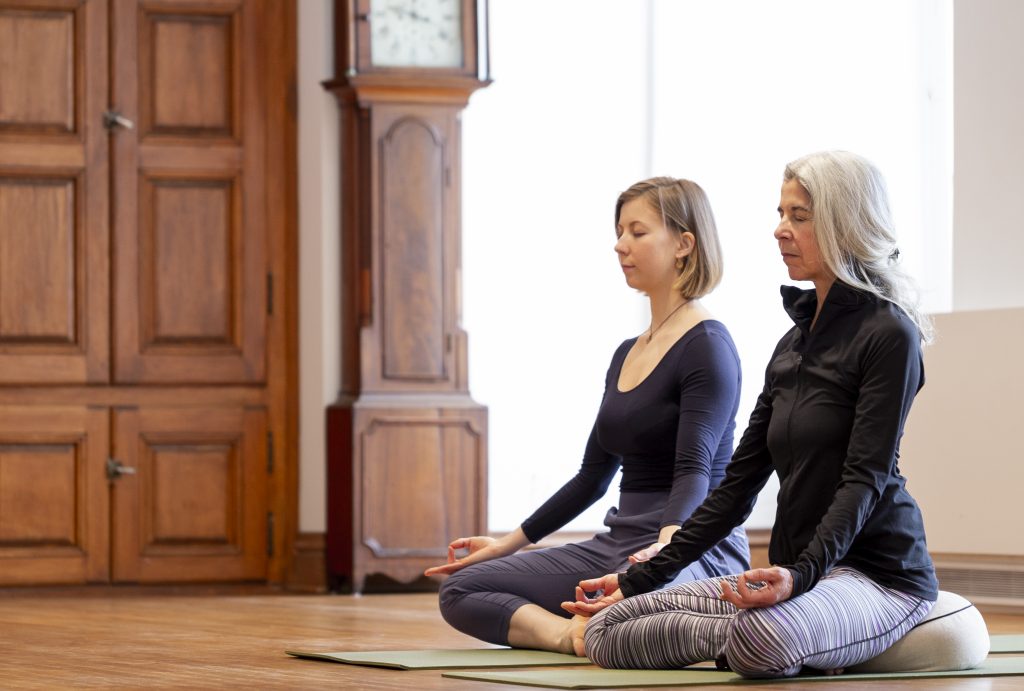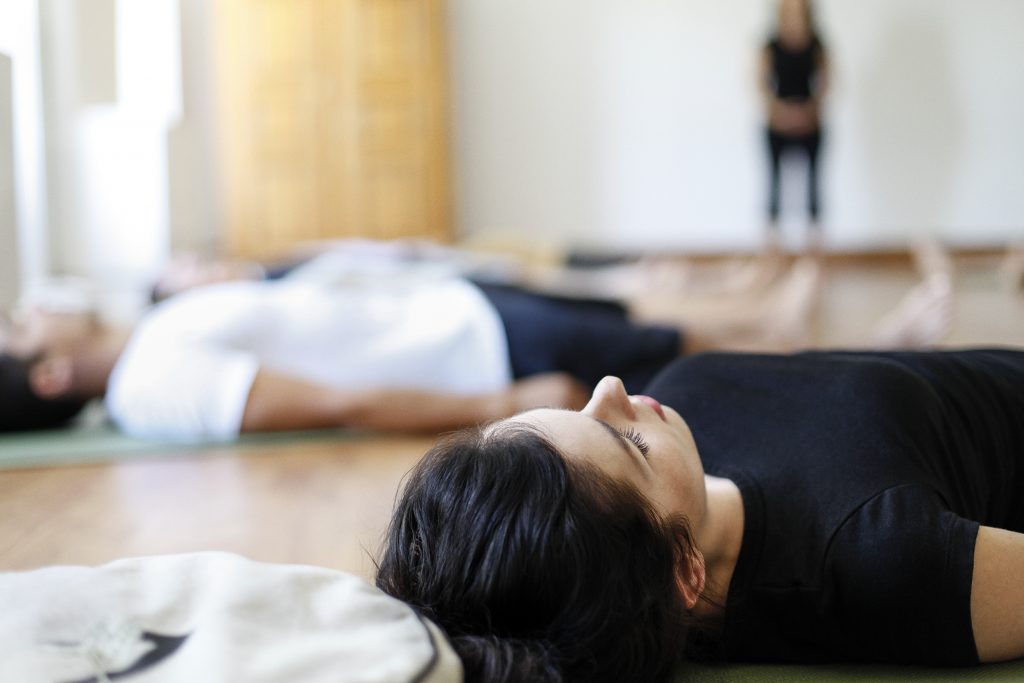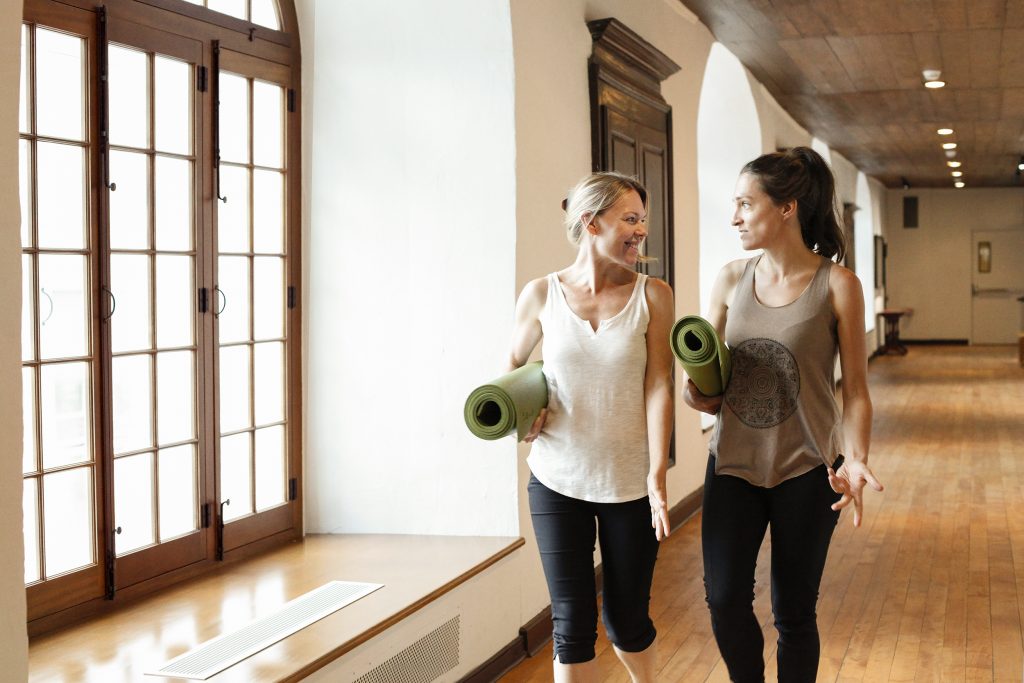Meditation: facts and myths
Meditation has been rising in popularity over the past few years. It’s a return to the self in a time where the breakneck pace of our lives makes it all too easy to forget our priorities. And yet, a surprising amount of confusion persists between myths and facts around this practice that has existed for thousands of years. To get a better picture of the practice, we’ve decided to clear up a few points about meditation and separate fact from fiction.
The benefits of meditation
Before getting any deeper into the facts and myths of it, let’s take some time to establish a practical definition of meditation and its benefits.
Meditation is, first and foremost, a mindful relationship with your body, your environment and the present moment. The goal of meditation is to reach a state of relaxation, to ground yourself and open your mind, all through breathing techniques. It essentially cultivates mindfulness, resilience, tolerance, caring and the ability to let go in the face of life’s obstacles.[1]
Thanks to advances in science, the physical, psychological and spiritual benefits of daily meditation are now proven. Today, we know that meditating has a profound effect on the structure and function of the brain. Just like you can train your body with regular physical exercise, you can also train your brain with regular meditation. This is thanks to neural plasticity: your brain’s ability to adapt to new situations throughout your life.[2] So, meditation can help you keep your brain healthy.
Three major neurological effects seem to be specific to mindfulness: attention control, emotional regulation and metacognition, which is thinking about your own thoughts. Mindfulness also seems to favour detachment between emotions and their psychological effect.[3]

Here are some of its benefits[4] :
- Decreased stress and anxiety
- Better regulation of emotions
- Increased occurrence of positive sensations
- Improved concentration and attention
- Improved memory
- Prevention of heart problems
- Strengthened immune system
Remember that all of these benefits are available for free, without any side effects. Doesn’t it make you want to try it out?
Meditation: facts and myths
Myth No. 1: Meditation is hard and takes years of practice to master.
At first, meditation techniques can seem difficult, even inaccessible for some people. And yet, meditating is really quite simple. It’s just a matter of calming your mind, focusing on yourself and on the present moment. It isn’t a matter of not thinking at all, rather of letting your thoughts flow without judgment. Just a few minutes of that simple exercise and voilà: you’re meditating! All you need is your own presence, attention and breathing.
However, it’s essential that you take your time. Make sure you’re comfortable, and start with simple breathing. Pay attention to your body, that’s what matters. Don’t be too hard on yourself, letting go will be harder the first few times. It’s normal. Practice makes perfect. Audio guides or meditation classes can also help you along.
Myth No. 2: Meditation is a religious practice.
Mediation is an ancient practice that was religious at first. It’s been at the heart of many religions such as Buddhism, Hinduism, Jainism, Sikhism, Daoism, Islam, and even Christianity.
In the West today, meditation is considered a secular activity. It’s meant to be a spiritual practice, divorced from any religions.

Myth No. 3: Some people can’t meditate.
Don’t worry, meditation is accessible to all. It might come a little more naturally to some, while others will need to practise a bit more. People who are easily distracted, nervous or simply quite busy tend to be less inclined to meditate. But that doesn’t mean they shouldn’t try. Quite the opposite—meditation can help with the ability to concentrate, to focus, to reduce stress and anxiety on top of helping to get grounded.
Be patient with yourself and above all, don’t hesitate to adapt your meditation to your own personal needs. You could, for example, try mindfulness meditation during your next walk by matching your breath to your steps.
Mindfulness meditation: putting it in action
- Breathe in through your nose with the first three steps you take.
- Hold the air in your lungs during the fourth step.
- Breathe out, still through the nose, with your next three steps.
- Keep your lungs empty for the last step.
- Repeat the cycle for as long as you like.
Walking like this keeps all the cells in your body well oxygenated. Coordinating your breath with your steps also helps you clear your mind and live the present moment.
Here’s another tip: start gradually, with shorter mediation sessions of five or ten minutes. Over time, meditation will start coming naturally to you. It’ll get easier to let go during this exercise and focus inward for longer.

Myth No. 4: To meditate, you need to chant.
Although some forms of meditation do include chanting, it isn’t essential to the practice. You can meditate in silence, with ambient music, with affirmations, or with chanting. It’s up to you to decide what works best for your meditation. Don’t forget that this is a moment set aside especially for you. It’s yours to shape.
Myth No. 5: To meditate, you must be sitting and uncomfortable.
On the contrary! What matters most about your position while you meditate is that it is comfortable. You can sit on the ground or on a chair, you can even lie down. Experiment with different positions. Just keep your back straight so that you can breathe naturally. Go for loose-fitting clothes that won’t hinder your movement. Relax your muscles and release the tension in your jaw. Close your eyes, if you want to. It can help you ignore external distractions.

Myth No. 6: Meditation is a solo practice.
Meditation is personal. It’s for focusing on the self. That being said, some people prefer guided meditation. Having someone to share in your process of letting go can make it easier to find your way to your inner garden. It’s also a good way to keep motivated. Marie-Ève Lécine, our collaborator, has looked into it for us. Read her article “5 reasons to join a group meditation.”

Breathing is the first thing we do when we’re born, and the last thing we do before we die. It’s what keeps us alive. In times of stress, we tend to give too little attention to our breathing, when in fact, we really should be focusing on it. Meditation presents a practical solution to that problem. Why not give it a try? Come on, it’s your turn to breathe!

